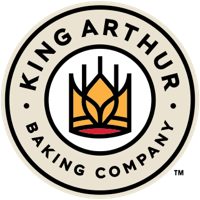Baking trials: What’s the best pan to bake focaccia?
For the crispiest focaccia crust, choose wisely.


Focaccia, Italy’s classic dimpled flatbread, can be thick or thin, crusty or soft, chewy or tender. It can be simply topped with oil and coarse salt or studded with olives and scattered with herbs. But the one thing all focaccia recipes share is this: They’re baked in a pan. Focaccia needs an oiled pan to attain its signature crispy bottom crust — but not all pans yield the same results. So, what’s the best pan to bake focaccia?

The material a pan's made of is critical. You want to choose a pan whose color and composition — glass or glazed ceramic, shiny or dark metal — yields the crust you want.
The more conductive the pan, the more quickly and thoroughly your focaccia will brown on the outside and bake on the inside. Aluminum or an aluminum-steel combination are highly conductive; stainless steel on its own is not. Cast iron is also nicely conductive but takes much longer than aluminum to heat through. Glass, stoneware, and ceramic are less conductive and thus slower to heat (and also less able to hold that heat).
Another factor in conductivity is the actual color of the pan. A pan with a dark interior will become hotter faster than a shiny or light-colored one. Thus, a dark aluminum pan will bake your focaccia more quickly than a glass or light-colored ceramic pan.
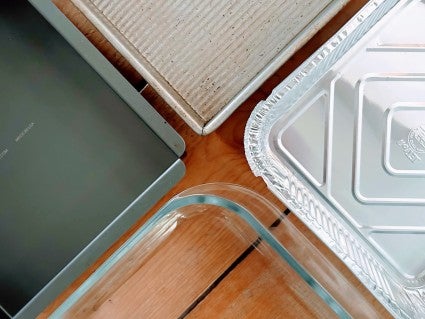
And an aluminum pan that's not just dark, but nearly black yields truly excellent results — which is why we specifically call for this Fabulous Focaccia Pan to make our Recipe of the Year, Big and Bubbly Focaccia. With its ultra-smooth anodized finish and generous 2" depth, this pan makes perfect focaccia.
Why is conductivity so important? Can’t you simply bake your focaccia longer in your favorite glass pan?
Yes, you can, but here’s the rub: The longer the focaccia is in the oven, the more its interior dries out. By the time focaccia baked in a glass or ceramic pan is nicely browned, its interior will have lost a lot of moisture. A pan whose conductivity is inefficient will yield either a nicely moist focaccia with a pale crust, or a beautiful brown crust and Sahara-dry crumb. And your focaccia's bottom crust will never achieve the crispiness in glass or ceramic that it can in metal.
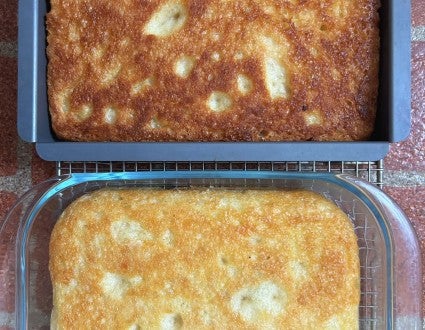
Because of their excellent conductivity, we've established that dark metal pans are best for focaccia. But how much of a difference does your baking pan actually make in your final focaccia? We decided to put four pans to the test, baking our Big and Bubbly Focaccia recipe in each of the following 9" square pans and comparing the results:
The focaccias were baked side by side in the same oven for the same amount of time. They were then taken out of their pans, examined for color, and returned to the oven rack (sans pan) for another few minutes, per the recipe.
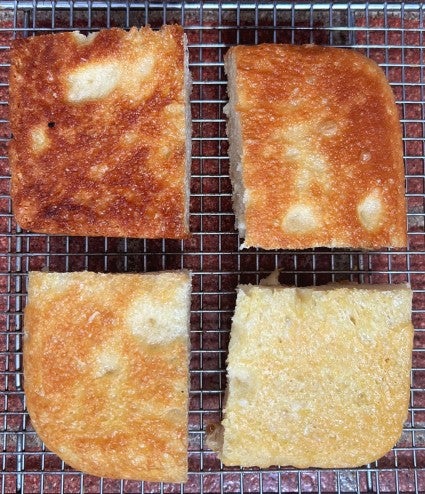
First place: black aluminum pan. The focaccia was beautifully browned with a wonderfully crispy bottom crust. Its interior was moist and chewy, neither too moist nor at all dry. It really does make a difference!
Second place: steel/aluminum pan. With its moderately browned crust and interior texture equivalent to that of the black aluminum pan, this is a good choice for those who can live without the extra-crispy bottom.
Third place: clear glass pan. Focaccia baked in a clear tempered glass pan had a light gold crust, with none of focaccia’s desired crispiness on the bottom. It was moister than the crusts baked in metal pans, though not unpleasantly so. If you prefer a soft, almost cake-like focaccia, glass would be a good choice for you.
Last place: disposable shiny aluminum pan. Despite the thinness of this pan, which might speak to good conductivity, its shiny surface seemed to deflect heat rather than absorb it. The result: a very underbaked focaccia, one barely browned on the bottom with a “flabby,” almost gummy interior.
If you love focaccia with a deep-gold, crispy bottom crust, one whose crumb is neither too moist nor overly dry, shelve your glass, ceramic, or shiny tinfoil in favor of a black or dark gray aluminum pan.
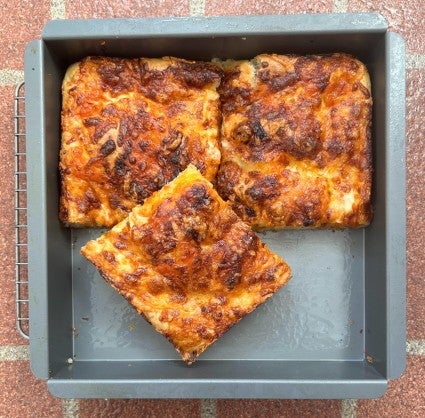
What else might you bake in a black 9” square aluminum pan? Our wildly popular 2020 Recipe of the Year, Crispy Cheesy Pan Pizza, calls for a round cast iron pan; but it’s also a perfect fit for the Fabulous Focaccia Pan.
Watch Martin show you how to make Big and Bubbly Focaccia:
Cover photo by Rick Holbrook; food styling by Kaitlin Wayne.


